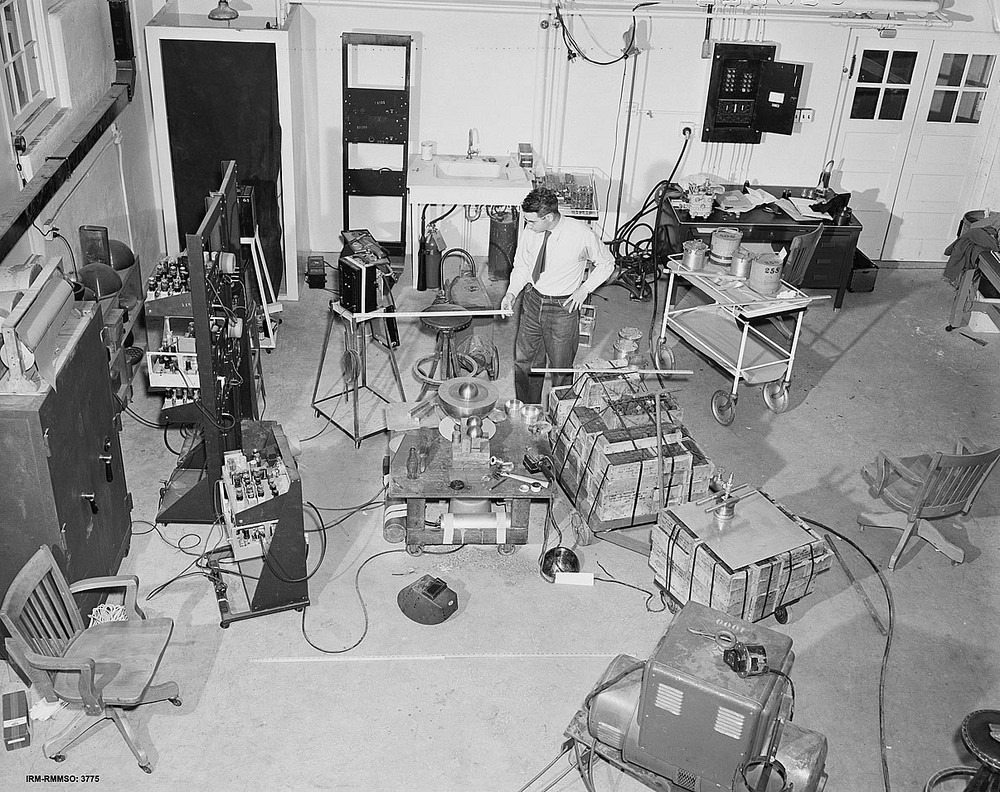What many dont know is that there was a third bomb in reserve, just in case.
Here there was in their hands, the rarest of the rare materiala 6.2 kg core of pure plutonium.
Both of them were dead within days, and the core acquired the nickname demon core.
Nuclear bombs are different from conventional bombs.
There are no fuses or detonators.
What we have instead is a mass of nearly critical radioactive materials.
So scientists figured it out the hard way.
At the head of the Critical Assemblies group was Otto Robert Frisch, an Austrian physicist.
Frischs method was simple and dangerous.
To help slow down the reaction, he used uranium hydride instead of pure uranium.
Realizing what was happening, Frisch quickly scattered the bars with his hand.
Frisch received a generation amount of radiation in the mishap, but not large enough to kill him.
The same, however, couldnt be said for his fellow scientists who were to repeat his experiments later.
So Daghlian stopped and cautiously retracted his hand which held the brick he was about to lay.
But then he dropped it, right over the core.
A re-creation of the experiment Harry Daghlian was involved in.
The moment the brick hit the assembly, the core went super-critical.
Daghlian reported seeing a blast of blue light and a wave of heat.
He instinctively knocked the dropped brick to the floor with his hand, but it was too late.
In those few moments, Daghlian received a fatal does of radiation.
He died 25 days later from acute radiation poisoning.
Harry Daghlian’s blistered and burnt hand after he received his fatal radiation dose.
Yet, exactly nine months later, a second accident occurred with the exact same core.
The idea was to stop just before this stage.
The screwdriver was the only thing that kept Slotin and his fellow scientists safe from certain doom.
Slotin conducted this experiment so many times in the past that he became brash.
But this time his screwdriver slipped.
Everybody started yelling at once.
There was total pandemonium.
A recreation of Slotin’s experiment made by the public historian Richard G. Hewlett.
Slotin, who was closest to the core, took the bulk of the blow.
He was exposed to over 1,000 rads of radiation, a terribly high dose anyone has ever taken.
He died after an agonizing nine days in the hospital.
His general health seemed acceptable.
But his left hand, initially numb and tingling, became increasingly painful.
Slotins whole-body dose was around twenty-one hundred rem of neutrons, gamma rays, and X rays.
(Five hundred rem is usually fatal for humans.)
The hand eventually took on a waxy blue appearance and developed large blisters.
Slotins physicians kept it packed in ice, to limit the swelling and the pain.
His right hand, which had been holding the screwdriver, suffered lesser versions of these symptoms.
On the fifth day, Slotins white-blood-cell count dropped dramatically.
His temperature and pulse began to fluctuate.
From this day on, the patient failed rapidly, the medical report noted.
Slotin suffered nausea and abdominal pain and began losing weight.
He had internal radiation burnswhat one medical expert called a three-dimensional sunburn.
By the seventh day, he was experiencing periods of mental confusion.
His lips turned blue and he was put in an oxygen tent.
Eventually, he sank into a coma.
He died nine days after the accident, at the age of thirty-five.
Standing near Slotin and watching over his shoulder was Graves.
Slotins body partially shielded him, so he received a high but non-lethal dose of radiation.
Another physicist, Marion Edward Cieslicki, died of acute myelocytic leukemia, 19 years after the accident.
It took two deaths for Los Alamos to finally bring an end to hands-on criticality experiments.
Further experiments were carried out using remote-control machines and TV cameras while all personnel stood at a quarter-mile distance.
After the accident, the core was still highly radioactive and needed time to cool off.



